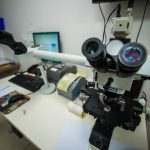Israeli Researchers Unravel Mysteries of Biodiversity
Jerusalem, 17 January, 2024 (TPS) -- In a groundbreaking study, Israeli researchers have conducted the most comprehensive investigation to date on the species richness of land vertebrates. Their findings hope to give better insights for consevation efforts around the world by shedding new light on the age-old question of why tropical regions boast the highest biodiversity globally.
Led by PhD student Tal Raz and Professor Shai Meiri of Tel Aviv University and Professor Uri Roll of Ben-Gurion University in the Negev, the researchers gave further confirmation that tropical regions near the equator serve as centers of high biodiversity for land vertebrates. However, their research also revealed intriguing nuances in the relationship between climate, topography, and species richness.
“We live in an age of the biodiversity crisis. If trends continue as they are, many of the plants and animals that share the Earth with us will not be here by the end of the 21st century due to destruction of their habitats, climate change, and other human effects,” said Roll. “A better understanding of where biodiversity is found, and why we find it there, is fundamental for our efforts to conserve it. Moreover, works such as this highlight how life on Earth is a truly miraculous phenomenon, and should serve as a call to action to everyone to protect it.”
After analyzing data from more than 5,000 amphibian, 9,600 avian, 5,000 mammal, and 8,900 reptile species, one the key revelation was that while increased rainfall correlates with higher species richness for amphibians, birds, and mammals, reptiles exhibit a different pattern. Regardless of rainfall, more reptiles are found in warmer regions, challenging previous assumptions about the universal impact of precipitation on biodiversity.
Reptiles, with their unique adaptations, showcase a distinct pattern in species richness, Meiri explained.
“Reptiles can do with very little water, because their metabolism is much slower compared to birds and mammals and because, unlike amphibians, they have highly efficient mechanisms to prevent water loss. But reptiles are highly sensitive to temperatures and cannot readily function in cold regions. Therefore, we see relatively high numbers of reptiles in deserts worldwide, where mammals, birds and, especially, amphibians, are scarce.”
The researchers also found that climate and topography play a pivotal role in shaping ecosystems, with a more pronounced influence on species richness in regions characterized by environmental diversity.
In Africa, for example, where temperatures are consistently high, varying rainfall becomes a crucial factor in determining species numbers. Conversely, in Eurasia, both temperature and rainfall exhibit high diversity, impacting species richness for land vertebrates.
“If trends continue as they are, many of the plants and animals that share the Earth with us will not be here by the end of the 21st century due to destruction of their habitats, climate change, and other human effects,” Roll said.







